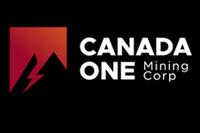Reality Check: Artificial Intelligence to Amplify Copper Supply Crunch

The growth of AI and expanding data centres are expected to exacerbate global copper supply shortage.
Amidst an intensifying global transition toward electrification, copper demand is expected to soon outstrip supply. Known as one of the most important metals for electrification, copper is essential for energy transmission, renewable power, electronics, electric vehicles (EVs), battery storage and a host of other use cases.
In addition to all of the above, there’s an emerging sector that analysts believe will drive demand for the base metal even higher: artificial intelligence (AI) and the digital economy.
Investors keeping a close watch on copper would do well to examine how the growing AI sector and explosion in demand for data centres could impact the copper market.
Market landscape
Investment firm Morningstar suggests copper may soon become the “new oil” as the energy transition causes demand to skyrocket. Current events support this assertion. Over the past year, copper prices have rallied, going from US$3.75 per pound in December 2023 to US$5.15 per pound in May 2024.
That increase is only the beginning. According to one top commodities trader, prices could surge by as much as 288 percent in the next several years.
The demand for copper is viewed as a reliable leading indicator of economic health and GDP growth — often referred to as "Dr. Copper." Copper has been mined for thousands of years and has broad applications across most sectors of the economy, from industrial to medical products. Now, however, it’s seen as a vital component in the push towards electrification.
Currently about 22 percent of overall copper demand comes from energy, and that is likely to increase in the next two to three decades due to changes in how we produce and consume energy.
In March, JP Morgan released a report by Michael Cembalest called Electravision. While that report was modeled on energy needs not changing much over the next two decades, there was an important caveat:
“The rise of AI might change that. One illustrative example: the PJM (mid-Atlantic) region has made sharp increases to projections of future power demand … These increases are entirely due to an increase in data centers which serve advanced computing/AI needs.”It’s now estimated that the “AI revolution” will require more power than the projected future fleet of EVs in the US.
AI and data centre expansions
As artificial intelligence and the digital economy continue to expand, these segments will also drive copper demand, primarily due to their vast physical and infrastructural requirements. Traditional data centres require considerable power, between 10 and 15 kW per server rack. The server racks in AI-focused data centres, however, require much more — roughly 40 to 60 kW of power on average — owing to their energy-intensive hardware.
These data centres require copper not just for power distribution, grounding and interconnects but also for incremental power generation. Within the United States alone, this could increase demand for copper by up to 1.5 percent. Even a one percent shortage could be enough to create a major market deficit.
Adding to this, many countries, Australia among them, have also added copper to their growing lists of strategic materials. Notably, Australia's Northern Territory has listed copper as a critical mineral. Both within Australia and globally, existing mines will not be sufficient to fulfill growing demand.
Global shortage
One looming problem is that the average age of the world's top 10 copper mines is approximately 95 years. They grow more expensive to mine and produce lower grades each year. Geopolitical issues are also a constant challenge, with many of the existing mines located in increasingly volatile regions such as Peru and Chile. This problem was exacerbated in November 2023 with the closure of a major copper mine in Panama, owned and operated by First Quantum Minerals (TSX:FM,OTC Pink:FQVLF).
Moreover, in 2023, copper supply hit its lowest seasonal level since 2008.
"To keep up with projected [copper] demand, [mining companies] would need to spend $16 billion per year," Jon Case, vice president, portfolio manager and research lead (equities) at CI Global Asset Management, told Morningstar. "That money doesn't exist in the industry."
Another sign that a shortage is on the horizon is the increased M&A activity in the copper mining industry — a trend which Barrick Gold (TSX:ABX,NYSE:GOLD) CEO Mark Bristow regards as a misguided attempt to address supply issues.
"You can consolidate, but it doesn't bolster the production profile," explained Barrick. "Consolidation often leads to reduced production. New discoveries are required."
Juniors respond to supply challenges
Given that existing copper projects will not be able to bridge the supply gap, exploration and discovery are expected to be crucial for ramping up production. Junior mining companies account for the majority of mineral discoveries, a significant indication of their indispensable role in closing the supply gap. With that in mind, we've listed a few companies that show considerable promise and potential.
Eastern Metals (ASX:EMS)
Eastern Metals has a high-quality asset portfolio located in some of Australia's most renowned mineral provinces in the Northern Territory (NT) and New South Wales. The company's current goal is to progress its two advanced exploration projects with well-targeted exploration. Located in the NT between Alice Springs and Tennant Creek, the Arunta Project comprises Eastern Metals' flagship copper project.
The highly prospective assets contained within the Arunta Project include Home of Bullion, Mulbangas and Prospect D. Home of Bullion is a polymetallic, structurally controlled, high-grade volcanic massive sulphide-style deposit with a mineral resource estimate of 3.1 million tonnes at 2.9 percent copper equivalent. It’s also strategically located between the Stuart Highway, the Adelaide-Darwin rail corridor and the Amadeus gas pipeline, east of Barrow Creek.
Sandfire Resources America (TSXV:SFR,OTCQB:SFAFF)
A subsidiary of Sandfire Resources (ASX:SFR,OTC Pink:SFRRF), Sandfire Resources America holds an 87 percent stake in Black Butte, one of the world's highest-grade undeveloped copper projects. The company maintains its planned development of the mine will combine modern mining techniques and best practice technology to develop an underground mine with a minimal surface footprint and environmental impact.
The project's location generated some controversy during its development, with a district court choosing to invalidate the company's mining permit in 2022, the end result of a June 2020 lawsuit against the company. This decision was reversed by the Montana Supreme Court in February 2024.
Sandfire Resources America's parent company also maintains copper mining and exploration projects in Botswana, Australia and Spain.
Coda Minerals (ASX:COD)
Advanced exploration company Coda Minerals holds the highly prospective Elizabeth Creek copper cobalt project. Located in South Australia's world-class Gawler Craton mining jurisdiction, the project spans roughly 701 square kilometres in the country's most productive copper belt. Elizabeth Creek is fully accessible by established and unsealed roads and also benefits from established access to grid power and scheme water.
Investor takeaway
Copper was already essential to electrification and sustainable energy. With the rise of AI and the requirement for bigger, more powerful data centres, the base metal’s critical role in supporting the digital economy is increasingly being recognised. Investors with an interest in copper projects may also want to keep developments in AI on their radar, as an emerging contributor to an increasing copper supply crunch, and identify strategic opportunities for investment.
This INNSpired article was written as part of an advertising campaign for a company that is no longer a client of INN. This INNSpired article provides information which was sourced by INN, written according to INN's editorial standards, in order to help investors learn more about the company. The company’s campaign fees paid for INN to create and update this INNSpired article. INN does not provide investment advice and the information on this profile should not be considered a recommendation to buy or sell any security. INN does not endorse or recommend the business, products, services or securities of any company profiled. If your company would benefit from being associated with INN's trusted news and education for investors, please contact us.





